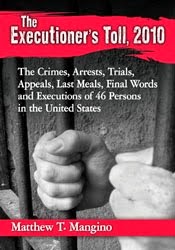This is the age of the plea bargain, writes Emily Yoffe in The Atlantic. here are excepts from her exceptional recent column.
Most people adjudicated
in the criminal-justice system today waive the right to a trial and the host of
protections that go along with one, including the right to appeal. Instead,
they plead guilty. The vast majority of felony convictions are now the result
of plea bargains—some 94 percent at the state level, and some 97 percent at the
federal level. Estimates for misdemeanor convictions run even higher. These are
astonishing statistics, and they reveal a stark new truth about the American
criminal-justice system: Very few cases go to trial. Supreme Court Justice
Anthony Kennedy acknowledged this reality in 2012, writing for the majority
in Missouri v. Frye, a case that helped establish the right to competent
counsel for defendants who are offered a plea bargain. Quoting a law-review
article, Kennedy wrote, “ ‘Horse trading [between prosecutor and defense
counsel] determines who goes to jail and for how long. That is what plea
bargaining is. It is not some adjunct to the criminal justice system; it is the
criminal justice system.’ ”
Ideally, plea bargains work like this: Defendants for whom
there is clear evidence of guilt accept responsibility for their actions; in
exchange, they get leniency. A time-consuming and costly trial is avoided, and
everybody benefits. But in recent decades, American legislators have
criminalized so many behaviors that police are arresting millions of people
annually—almost 11 million in 2015, the most recent year for which figures are
available. Taking to trial even a significant proportion of those who are
charged would grind proceedings to a halt. According to Stephanos Bibas, a
professor of law and criminology at the University of Pennsylvania Law School,
the criminal-justice system has become a “capacious, onerous machinery that
sweeps everyone in,” and plea bargains, with their swift finality, are what
keep that machinery running smoothly.
Because of plea bargains, the system can quickly handle the
criminal cases of millions of Americans each year, involving everything from
petty violations to violent crimes. But plea bargains make it easy for
prosecutors to convict defendants who may not be guilty, who don’t present a
danger to society, or whose “crime” may primarily be a matter of suffering from
poverty, mental illness, or addiction. And plea bargains are intrinsically tied
up with race, of course, especially in our era of mass incarceration.
As prosecutors have accumulated power in recent decades,
judges and public defenders have lost it. To induce defendants to plead,
prosecutors often threaten “the trial penalty”: They make it known that
defendants will face more-serious charges and harsher sentences if they take
their case to court and are convicted. About 80 percent of defendants are
eligible for court-appointed attorneys, including overworked public defenders
who don’t have the time or resources to even consider bringing more than a tiny
fraction of these cases to trial. The result, one frustrated Missouri public
defender complained a decade ago, is a style of defense that is nothing more
than “meet ’em and greet ’em and plead ’em.”
According to the Prison Policy Initiative, 630,000 people
are in jail on any given day, and 443,000 of them—70 percent—are in pretrial
detention. Many of these defendants are facing minor charges that would not
mandate further incarceration, but they lack the resources to make bail and
secure their freedom. Some therefore feel compelled to take whatever deal the
prosecutor offers, even if they are innocent.
Writing in 2016 in the William & Mary Law Review,
Donald Dripps, a professor at the University of San Diego School of Law,
illustrated the capricious and coercive nature of plea bargains. Dripps cited
the case of Terrance Graham, a black 16-year-old who, in 2003, attempted to rob
a restaurant with some friends. The prosecutor charged Graham as an adult, and
he faced a life sentence without the possibility of parole at trial. The
prosecutor offered Graham a great deal in exchange for a guilty plea: one year
in jail and two more years of probation. Graham took the deal. But he was later
accused of participating in another robbery and violated his probation—at which
point the judge imposed the life sentence.
What’s startling about this case, Dripps noted, is that
Graham faced two radically different punishments for the same crime: either be
put away for life or spend minimal time behind bars in exchange for a guilty
plea. In 2010, the Supreme Court ruled, in Graham v. Florida, that the
punishment Graham faced at trial was so cruel and unusual as to be
unconstitutional. The Court found that a juvenile who did not commit homicide
cannot face life without parole.
Thanks in part to plea bargains, millions of Americans have
a criminal record; in 2011, the National Employment Law Project estimated that
figure at 65 million. It is a mark that can carry lifetime consequences for
education, employment, and housing. Having a record, even for a violation that
is trivial or specious, means a person can face tougher charges and punishment
if he or she again encounters the criminal-justice system. Plea bargaining has
become so coercive that many innocent people feel they have no option but to
plead guilty. “Our system makes it a rational choice to plead guilty to
something you didn’t do,” Maddy deLone, the executive director of the Innocence
Project, told me. The result, according to the late Harvard law professor
William J. Stuntz, who wrote extensively about the history of plea bargains
in The Collapse of American Criminal Justice (2011), is a system that
has become “the harshest in the history of democratic government.”
Plea bargaining didn’t exist in colonial America. Law books,
lawyers, and prosecutors were rare. Most judges had little or no legal
training, and victims ran their own cases (with the self-evident exception of
homicides). Trials were brief, and people generally knew one another. By the
19th century, however, our modern criminal-justice system was coming into its
own: Professional prosecutors emerged, more defendants hired lawyers to
represent them, and the courts developed more-formal rules for evidence. Trials
went from taking minutes or hours to lasting days. Calendars became clogged,
which gave judges an incentive to start accepting pleas. “Suddenly, everybody
operating inside the system is better off if you have these pleas,” Penn’s
Stephanos Bibas told me.
The advantages of plea bargains became even clearer in the
latter part of the 20th century, after the Supreme Court, under Chief Justice
Earl Warren, issued a series of decisions, between 1953 and 1969, that
established robust protections for criminal defendants. These included the
landmark Gideon v. Wainwright andMiranda v. Arizona decisions,
the former of which guaranteed the Sixth Amendment right to counsel in felony
cases (since expanded to some misdemeanor cases), and the latter of which
required that police inform those in their custody of the right to counsel and
against self-incrimination. The Court’s rulings had the inevitable effect of
making trials lengthier and more burdensome, so prosecutors began turning more
frequently to plea bargains. Before the 1960s, according to William J. Stuntz,
between one-fourth and one-third of state felony charges led to a trial. Today
the figure is one-twentieth.
The legal system provides few rules and protections for
those who take a deal. In what has been described as one of the Court’s
earliest plea-bargain decisions, Brady v. United States (1970), the
justices found that guilty pleas were acceptable as long as certain conditions
were met, among them the following: Defendants had to have competent counsel;
they had to face no threats, misrepresentations, or improper promises; and they
had to be able to make their plea “intelligently.”
This seemed eminently fair. But crime had already started to
increase sharply. The rise provoked a get-tough response from police,
prosecutors, and legislators. As the rate of violent crime continued to
accelerate, fueled in part by the crack epidemic that started in the ’80s, the
response got even tougher. By the 1990s, the U.S. had entered what Donald
Dripps calls “a steroid era in criminal justice,” which continued even though
violent crime peaked by 1992 and began its now-historic decline. In the late
20th century, legislators passed mandatory-minimum-sentence and “three strikes”
laws, which gave prosecutors an effective bludgeon they could use to induce
plea bargains. (Some “three strikes” laws result in life imprisonment for a
third felony; hundreds of people in California received this punishment for
shoplifting. California reformed its three-strikes legislation in 2012 to
impose such punishments only for serious or violent felonies.)
The growth of the system took on a life of its own. “No one
sets out to create bloated criminal codes,” I was told by David Carroll, the
executive director of the Sixth Amendment Center, which protects the right to
counsel. “But once they exist, vast resources are spent to justify them.” In
response to the crime wave, the United States significantly expanded police
forces to catch criminals, prosecutor’s offices to charge them, and the
correctional system to incarcerate them. Legislators have added so many acts to
criminal codes that in 2013, Neil Gorsuch—now on the Supreme Court, but then an
appellate judge—publicly raised concerns. In a speech sponsored by the
Federalist Society, he asked, “What happens to individual freedom and
equality—and to our very conception of law itself—when the criminal code comes
to cover so many facets of daily life that prosecutors can almost choose their
targets with impunity?”







